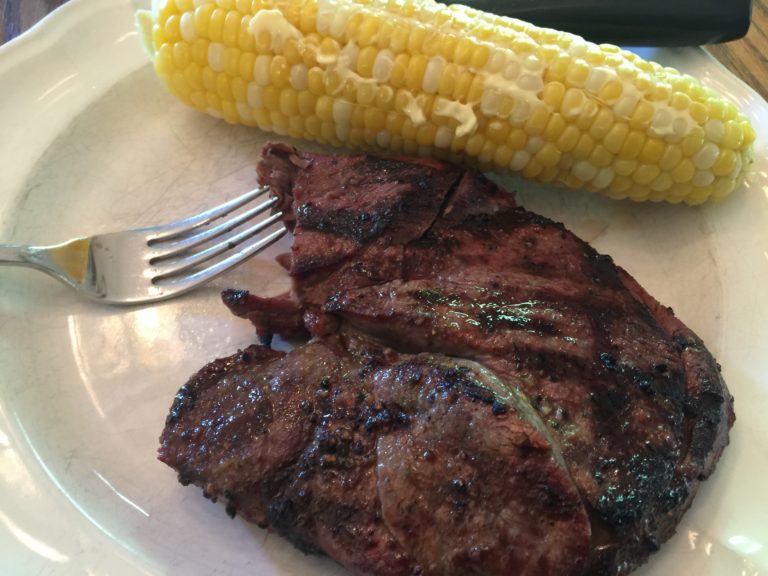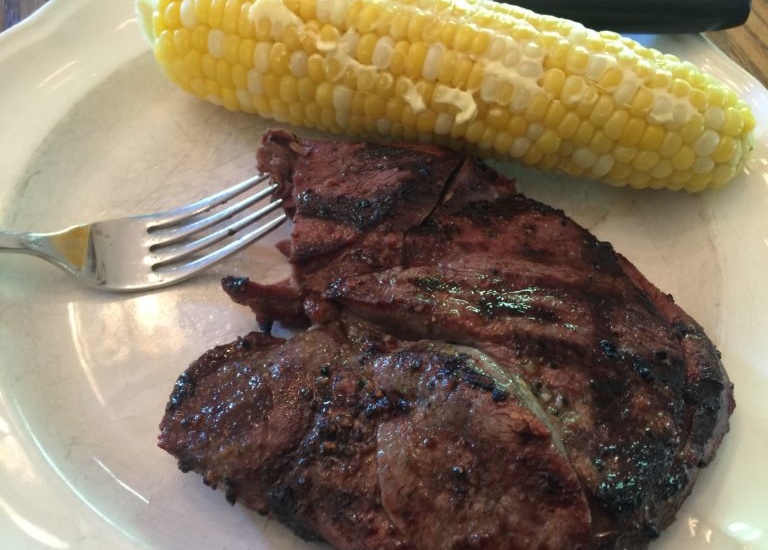We interrupt this week’s discussion of zombie deer, brain-eating CWD prions and those folks who are uber-paranoid of their own shadows to bring you four interesting questions.
The first question came innocently from a deer friend (pun intended) on one of my Facebook posts from this morning. After the madness coming out of Minnesota (one expert opinion) on how deer infected with chronic wasting disease will “surely,” according to him, one day make the leap to humans, I once again posted a link to a 50-year scientific study. The study, if anyone bothered reading it, reminded everyone how researchers pored over 50 years of data from the CWD endemic areas of Wyoming, Colorado and Nebraska and concluded that human cases of Creutzfeld Jakob Disease actually decreased during that span. Decreased, that is, from a naturally occurring prevalence of 1 in 1 million odds. Don’t mind that those cases have nothing to do with venison.

Would you feed your family venison from a deer that has tested positive for CWD? (photo by Tracy L. Schmidt)
So, anyway, back to my post. One of the replied comments is one I have heard many times over the past 15 years during discussions on CWD and what to do with meat from an infected deer:
Question 1: “Would you feed your family venison from a deer infected with CWD?”
Although I answered with a quick, “no,” I really should have spent the time typing out a longer answer. More on that (and the answer to Question 1) later. First, let’s tackle the other questions.
Question 2: Would you feed a chicken to your family if it tested positive for arsenic?
Of course not. Right? Well, thousands, if not millions, of people are doing that as we speak.
According to the National Center for Biotechnology Information, arsenicals (roxarsone and nitarsone) used in poultry production likely increase inorganic arsenic (iAs), monomethylarsonic acid (MMA), dimethylarsinic acid (DMA), and roxarsone or nitarsone concentrations in poultry meat.
What’s more, a National Health and Nutrition Examination Survey (3,329 participants) showed those who ate chicken had urine total arsenic levels that were 1.12 (95% CI: 1.04, 1.22) and DMA 1.13 (95% CI: 1.06, 1.20) times higher than non-chicken eaters.
The report concluded the Food and Drug Administration says that long-term exposure to high levels of arsenic is associated with higher rates of skin cancer, bladder cancer and lung cancer, as well as heart disease.
So, if we are suddenly concerned about what we are feeding our families, we should probably think about these consequences the next time we order foot-long oven-roasted chicken subs for football Sunday.
Question 3: Would you feed your family processed meat if you knew it tested positive for one of the top cancer-causing agents?
The International Agency for Research on Cancer has classified processed meat (ie hotdogs, lunch meat, nuggets, etc.) as a Class A carcinogen, something that “definitely” causes cancer. Definitely. Not likely. Not probably. Not well, maybe someday.
Red meat alone is classified as a “probable” carcinogen. But I digress; back to processed meats. According to the World Health Organization, eating 50 grams of processed meat every day increases a person’s risk of colorectal cancer by nearly 20 percent.
What’s for dinner tonight, honey … Turkey bologna?
Question 4: Would you feed strawberries to your family if they tested positive for a chemical known to cause Parkinson Disease?
Of course not. Right? Well, thousands, if not millions, of people are doing that as we speak.
According to research by the U.S. Department of Agriculture and the Food and Drug Administration that included 38,000 test samples, strawberries were classified as the “dirtiest” fruits/vegetables when it comes to pesticide contamination. One sample had 20 different pesticides on each berry! (Spinach was a close second, being classified as nearly 2 times more contaminated than any other fruit or vegetable).
Among the strawberry contaminants was paraquat (Gramoxone) — a weed and grass killer that has been associated with an increase in prevalence of Parkinson Disease.
According to the American Parkinson Disease Association, exposure to paraquat increases a person’s odds of contracting the disease by up to 300 percent.
So, let’s get back to that Question 1: Would I feed my family venison from a deer that has tested positive for CWD?
No, I absolutely would not.
That being said, I will absolutely keep feeding my family pure, clean venison every chance I get. More important, I now — more than ever — know how much of a hypocrite I have been all these years.
And I also know that I had better hire a whole bunch of scientists and laboratories to start testing everything else we are putting in our bodies on a daily basis.
Principals for the Pursuit Channel and the Edmonton, Alberta, Canada-based WILD Television Network (WILD TV) have announced the formation of a strategic alliance to better serve their audiences.
The new alliance will offer unique crossover efficiencies and increased target penetration for the hunt-fish-shoot manufacturing community serving the United States, Canada and several key European markets. Pursuit Channel and what will become the re-branded “WILD Pursuit” network in Canada combine for 25 years of international broadcasting acumen serving tens of millions of households. WILD launched in 2004. Pursuit is entering its 11th season as a leading distributor of exceptional, Nielsen-measured, independently driven outdoor content.
“This super-synergized, seamless coalition creates world-class competencies for our continent’s most important, most active conservationists,” said Rusty Faulk, CEO of the Pursuit Channel.
The Pursuit Channel – WILD TV alliance, creating WILD Pursuit to serve Canada, precedes more big news from Pursuit Channel during next week’s 2019 SHOT Show in Las Vegas, NV (booth #10735, Level 2), and preceding it. Pursuit Channel, a categorical leader in HD home delivery, is active nationally via DIRECTV HD, AT&T HD, DISH Network, Fios by Verizon HD and Centurylink Prism HD, Cox Communication and the National Cable Television Cooperative (NCTC). Since subscribing to Nielsen for its reporting in January 2018, Pursuit added 4 million households. Additionally, PursuitUp provides free viewing for hundreds of episodes through ROKU, Amazon Fire TV, iPhone and Androids.
[embedded content]



